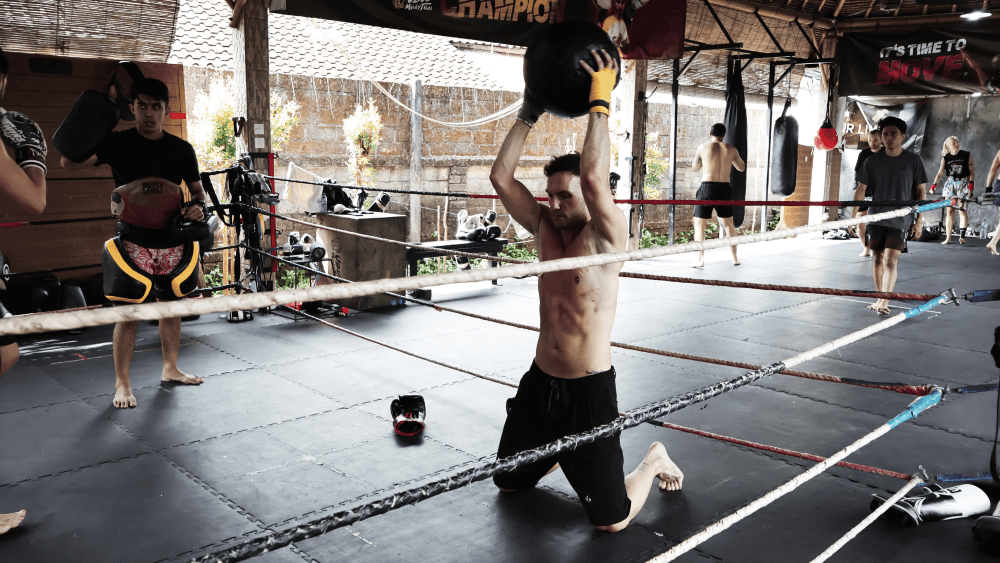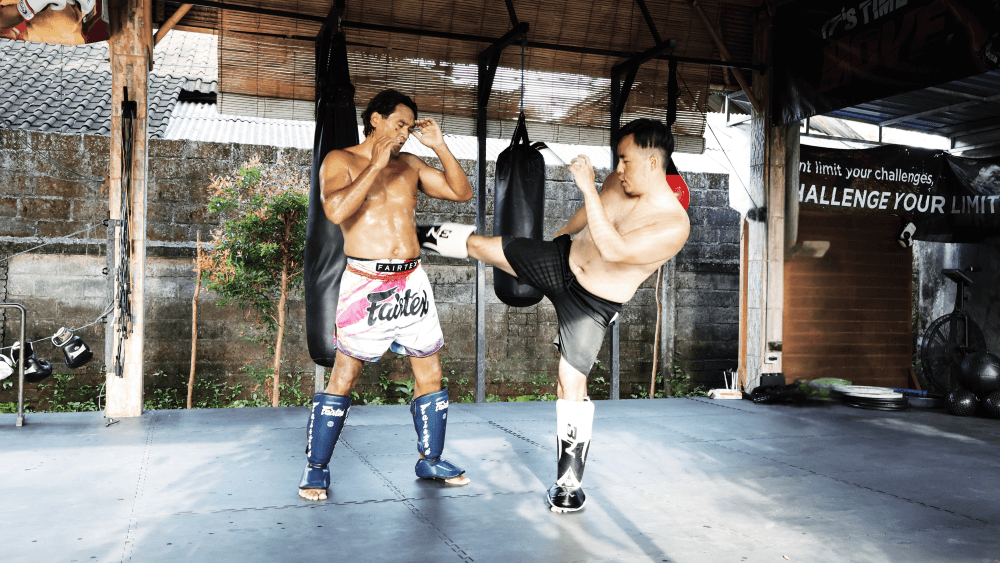Every fighter knows the dread of stepping on the scale. You’ve trained for weeks, sharpened your skills, but the fight doesn’t happen if you don’t make weight. That’s where the real battle begins, not in the ring, but in the kitchen, the gym, and even the sauna. Cutting weight isn’t just about shedding pounds; it’s about doing it in a way that leaves you sharp, fast, and ready to perform when the bell rings.
The best fighters understand this: a smart weight cut is a strategy. Do it wrong, and you show up on fight night flat, dehydrated, and drained. Do it right, and you walk into the ring bigger, stronger, and with the edge that can decide a fight. This guide will show you exactly how to cut weight for a fight without losing what matters most, your performance.
Understanding Weight Cutting
Weight cutting isn’t just about losing pounds; it’s about manipulating body composition and water levels to hit the number without losing strength. Fighters usually drop body fat during camp, then shed excess water in the final week to squeeze into their division.
But here’s the truth: poor cuts destroy fighters. You’ve probably seen it—guys looking like zombies on the scale, barely able to stand, then gassing out in the first round. That’s the price of cutting weight wrong. The goal isn’t just to make weight; it’s to do it without sacrificing the tools that win fights: speed, stamina, and power.

Phase 1: Pre-Camp Preparation
This stage happens weeks before fight week. It sets the foundation so the final cut is controlled instead of desperate.
1. Know your walking weight
Your walking weight is the baseline number you sit at when you’re not cutting. If that number is too far from your fight weight, say, more than 10–12% above, you’ll be forced into a drastic cut that wrecks energy and recovery. Tracking this month out ensures the final week is about small adjustments, not panic weight loss.
2. Clean up your diet early
Crash diets don’t work in a fight camp. Shifting to whole foods, lean proteins, vegetables, and complex carbs weeks before camp trims unnecessary fat while fueling your training. The earlier you start eating clean, the easier the final cut becomes.
3. Lock in routines

Your body loves consistency. By getting into a routine with meal timing, hydration, and sleeping well before fight week, you train your system to respond predictably. When the stress of the final cut hits, your body stays balanced instead of rebelling.
Phase 2: Diet Strategies for Weight Cutting
During camp, the focus is on gradual fat loss and fueling training. This phase usually runs for 6–8 weeks leading up to fight week.
Protein first
During calorie restriction, muscle is at risk. Lean protein protects it, keeping you strong and powerful while burning fat. Aim to include protein with every meal so you’re cutting fat, not muscle mass.
Smart carbs
Carbs are your fuel tank, but fighters often misuse them. Instead of cutting carbs entirely, taper portion sizes and time intake around training. This ensures energy is available when you need it most, during sparring, padwork, or roadwork, without adding unnecessary water weight.
Healthy fats
Fats stabilize hormones, protect joints, and provide long-lasting energy. Cutting them too low makes fighters moody, sluggish, and injury-prone. Clean fats like avocado, nuts, and olive oil allow you to train hard even on fewer calories.
Cut the junk
Sugary snacks, fast food, and processed meals don’t just add empty calories; they cause bloating and water retention. Cutting them makes fat loss cleaner and ensures fight week won’t be about undoing weeks of sloppy eating.
Phase 3: Training Adjustments During the Cut
Training while cutting weight isn’t about doing more; it’s about doing the right kind of work.
Cardio for fat loss

Long, steady runs or cycling help burn calories efficiently without overloading your nervous system. They build endurance while gradually lowering fat, setting you up for a smoother cut.
Strength maintenance
You don’t stop lifting weights, but you reduce volume. Heavy squats or long lifting sessions aren’t the goal here; sharp, lower-volume strength work keeps muscles engaged without draining recovery. This prevents you from losing the strength you’ve built in camp.
Skill stays first
Weight cutting isn’t an excuse to neglect technique. Many fighters let the cut dominate their focus and forget that the fight is won by skill, not the scale. Always prioritize drilling combinations, sparring with intent, and refining defense, even while cutting.
Prioritize recovery
Cutting calories stresses the body. Recovery through quality sleep, stretching, foam rolling, and active rest is just as important as the training itself. If you’re not recovering, you’re breaking down, and that shows in your performance.
Phase 4: The Final Week - Cutting Water Weight
Now comes the sharp drop before weigh-ins. By this point, you should already be lean. This phase is about short-term water, glycogen, and sodium manipulation, not losing fat.
1. Water loading
Flooding the body with 2–3 gallons of water per day tricks it into flushing excess fluids. When you cut back just before weigh-in, the body keeps flushing, pulling water weight with it. The science works, but the key is discipline, don’t skip steps.
2. Carb depletion
Carbs store water in muscle glycogen. By tapering carbs in a fight week, you drain glycogen and the water attached to it. This can drop several pounds quickly, but timing is crucial; done too soon, and you’ll be flat in sparring. Done right, it keeps you light for weigh-ins.
3. Sodium cut
Sodium holds water in the body. Reducing sodium a few days out helps flush water retention and makes the final pounds easier. Fighters who ignore this step often find themselves stuck, sweating endlessly just to hit the number.
4. Controlled sweating
This is the last step, not the first. Saunas, hot baths, or layered clothing can pull the final few pounds, but overdoing it wrecks performance. Smart fighters keep sweat sessions short, safe, and always followed by controlled rehydration.
Phase 5: Post-Weigh-In Recovery
The scale isn’t the finish line; fight night is. How you recover after weigh-ins determines whether you show up sharp or sluggish.
1. Rehydrate with electrolytes first
Plain water isn’t enough; you need to replace sodium, potassium, and magnesium to restore muscle function and brain clarity. Start with electrolyte drinks or rehydration salts before eating anything solid.
2. Refuel glycogen
Your muscles are empty after carb depletion. Adding back rice, oats, potatoes, or pasta refills glycogen stores, bringing back the explosive energy you’ll need for fight night.
3. Balance protein and fats
Protein aids recovery and repairs tissue, while fats slow digestion to give you steady energy. Together, they round out your meals without causing sugar crashes.
4. Eat small, frequent meals
Stuffing yourself after weigh-ins is a rookie mistake; it bloats the stomach and slows digestion. Eating every 2–3 hours in smaller meals helps your body process nutrients efficiently, leaving you energized and comfortable by fight night.
Common Mistakes in Cutting Weight
1. Starting the cut too late
Many fighters wait until fight week to start thinking about weight. This forces them into extreme dehydration and starvation tactics that destroy performance. Weight cutting should begin weeks out, with gradual fat loss and diet clean-up, so fight week is about fine-tuning, not desperation.
2. Cutting too much weight
Dropping more than 10–12% of your body weight for a fight is a recipe for disaster. The more drastic the cut, the greater the toll on your energy, recovery, and brain function. Fighters often convince themselves that the size advantage is worth it, but in reality, showing up depleted cancels that out.
3. Relying only on sweat sessions

Spending hours in a sauna or layered up in sweats to drop pounds is the most common rookie mistake. It drains water and electrolytes fast, but leaves fighters flat and drained. Sweating should only be the final tool after diet, water loading, and sodium cuts have already done their job.
4. Skipping rehydration after weigh-ins
Some fighters rehydrate poorly, chugging plain water, overeating, or skipping electrolytes. The result? They step into the ring still dehydrated or sluggish. The smartest fighters treat rehydration as part of the cut itself, planning what to drink and eat the moment they step off the scale.
5. Ignoring recovery during the cut
With calories dropping, fighters often push harder in training without supporting recovery. This leads to nagging injuries, exhaustion, and poor fight-night performance. Recovery, sleep, stretching, and active rest should be treated as seriously as training itself during a cut
Cutting weight isn’t about suffering; it’s about strategy. If you approach it phase by phase. you’ll step into the ring strong, sharp, and with a real edge.
Weight cutting is one of the riskiest parts of fight preparation, and no two fighters are the same. Body type, metabolism, and training intensity all play a role in how your body responds. That’s why it’s essential to always consult with experienced coaches, certified nutritionists, or medical professionals before making major changes to your diet or hydration. Guidance from the right experts ensures that your cut is not only effective, but also safe for your health and long-term performance.
At Ubud Muay Thai, we teach fighters to prepare the right way, combining technique, conditioning, and safe weight management to maximize performance. Join us in Ubud, Bali, and experience training that strengthens both body and mind.

